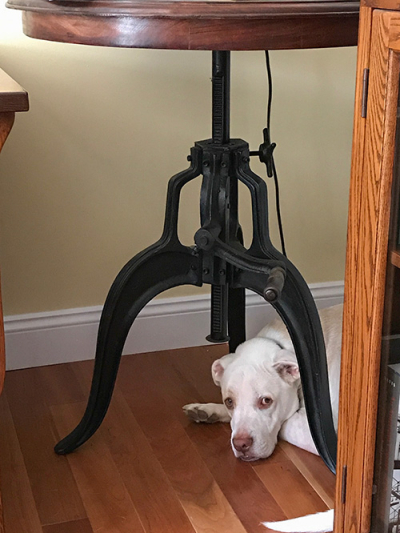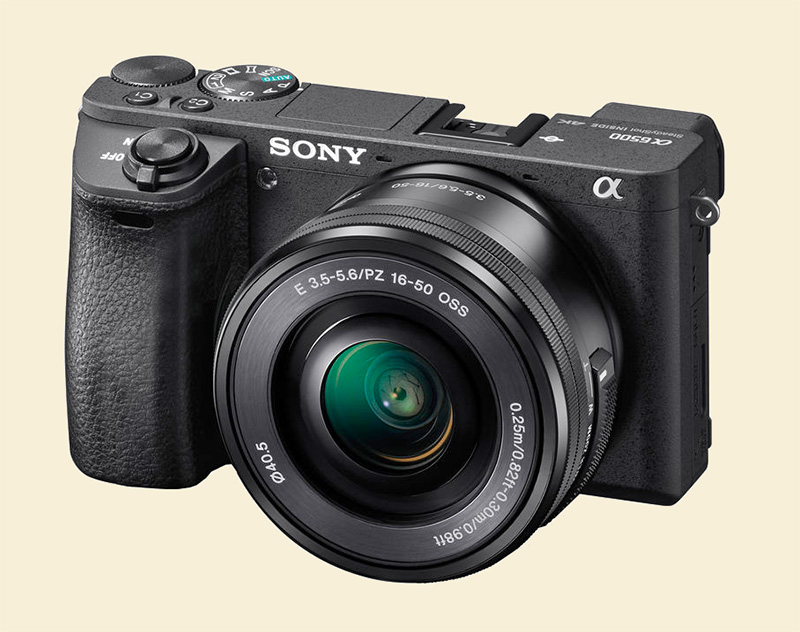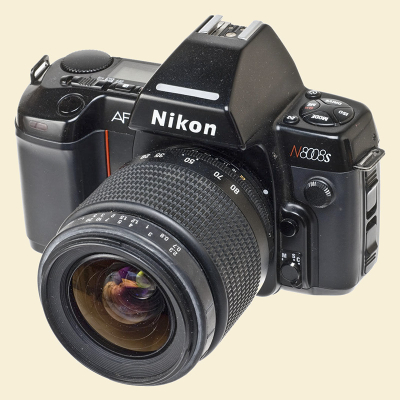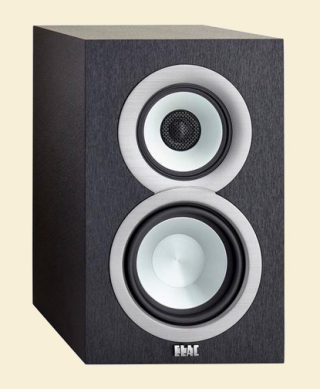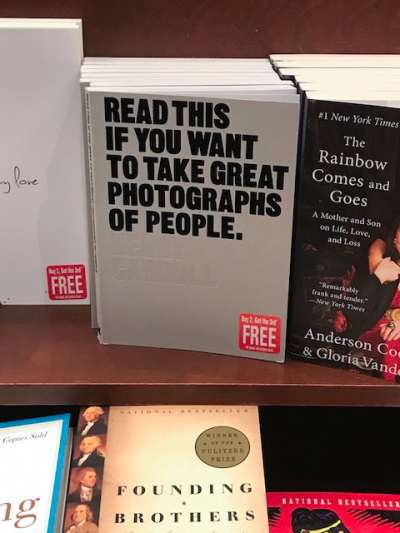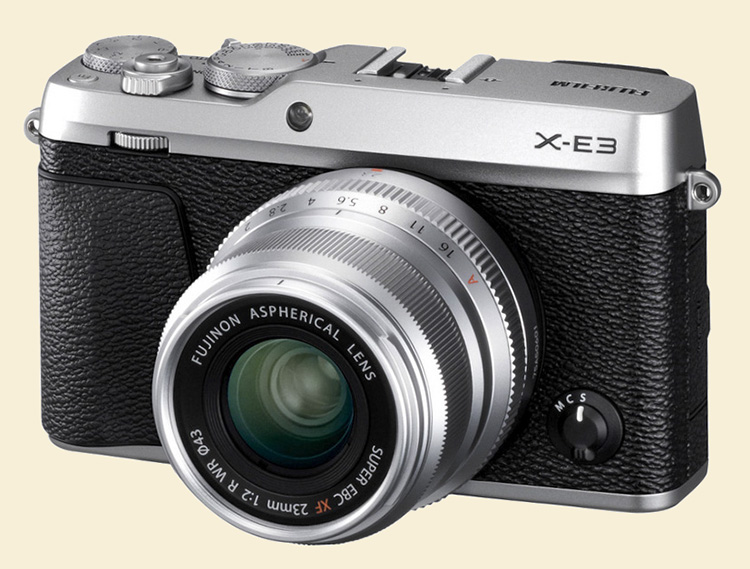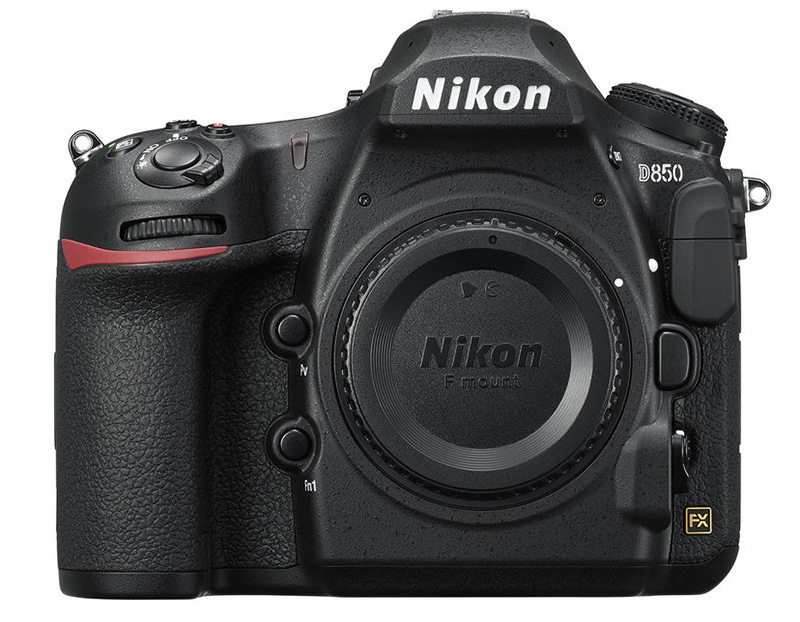Oh, Nikon, Nikon, Nikon. What are we going to do with you?
The latest flurry of bad bad pub is all about tone-deafness, and, I think, isolation from the outside world. It's a bad kind of viral news for a company. You commit some stupid blunder, a plain faux pas, a dunderheaded misstep, and put your foot smack in the cowpie. And for no good reason other than that you were just not paying attention.
This problem fits a pattern: the damaging way that Nikon mismanaged its announcement of "extraordinary losses" last February; the deep-sixing of the announced DL compacts; the growing perception that Nikon lets its customers be beta-testers by initially releasing version .9 products for sale.
What happened? In this case, the Guardian put it succinctly: "The Japanese camera giant chose 32 professional photographers across Asia and Africa to test-drive and promote its new camera, the D850. Of the 32 photographers chosen, Nikon managed to pick zero women."
Why is it a bad kind of viral news for a company? Unfortunately, it's not just a dunderheaded blunder, it's a particular sort of dunderheaded blunder that allows people to cluck and gossip about you and feel virtuous doing it. It allows them to be snarky and sanctimonious at the same time. That gives it greater currency. So the story is not only tossed out and chewed over by the forum magpies and the clickbait sites, not only reported by the photographic websites such as Fstoppers and PetaPixel, but goes outside the category and into the culture at large, picked up by mainstream news sites like the Guardian and the Old Grey Lady* herself.
We should acknowledge that the story isn't just about PR. Women photographers are understandably angry about the slight. No less a photographer than the star photojournalist and author Lynsey Addario protested. "Guess they forgot to invite me? I'm a [Nikon Ambassador]," she tweeted. An Instagram picture of her gear from 2016 shows no shortage of Nikon bodies. I'll just gently point out that Lynsey has ten times more courage than I do, and I'm a big rough tough man, not a tiny little delicate flower of a female. (Although I will say that the D850 is too big for me. ROFL.)
But really, Nikon. Bad dog.
I have no more thoughts on the matter, but a story did come to mind. Many years ago, in the early '90s, I was walking through Rochester on the way to a meeting, dressed, not typically for me, in a coat and tie. As I passed Kodak headquarters, the doors opened and a flood of businesspeople in suits hit the sidewalk; clearly, a big meeting had just ended. By happenstance I fell in step with two guys who were going the same way I was. We traded pleasantries and walked along together for a ways.
Well, they chatted for a while, essentially gossiping about the meeting: who seemed angry, who had what agenda, etc. After a block or so one of them looked over at me and said, "What department do you work for?"
"Oh, I'm not with Kodak," I answered. "I'm a journalist."
That shut them up—and not only. Amazingly, we walked on together for almost three more blocks, and neither of those guys said one single more word, to me or to each other. Total, complete silence. As I split off from them I said "have a good one" or something like that, and neither even acknowledged that.
The encounter was another in a series of signs that to my mind indicated that Kodak's culture at the time had become almost entirely internal. What mattered was what happened within Kodak; the outside world hardly counted. Except as something it was necessary to wall off.
Forgive me for the bald speculation, but I think what we're seeing is signs of the same thing happening with Nikon. It's just a feeling I get—it feels like a corporate culture that's getting too insular, too self-referential, too walled-off. Which is never a good thing.
But I'm just talking. I know nothing.
Mike
(Thanks to Scott J.)
*Meyer Berger, a New York Times columnist, so christened the Times on September 17th, 1951, in LIFE magazine, in an article titled "The Gray Lady Reaches 100." "THE Old Gray Lady will celebrate her 100th birthday this Sept. 18. The 'lady' is a newspaper—the New York Times—regarded by many in the world at large (and all within its own world) as the world's greatest. And newsmen generally hail it as 'old' and 'gray' by way of acknowledging its traditional special marks: starch conservatism and circumspection."
The nickname surfaced more recently in a famous tweet on a then-fledgling communication service called Twitter in 2007:
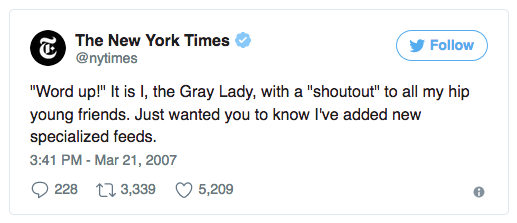
Although the writer, a NYT developer named Jacob Harris, intended the opening words to be "like the Queen trying to use slang," his "combination of fusty and fashionable" as he put it hit a little too close to the mark, and the Times has been ridiculed for "Word up! It is I, the Gray Lady" ever since.
I should also point out that, apart from connoting brains, "gray matter" is journalese for lots of unrelieved text on a page. The New Yorker, for example, the last mainstream magazine in the English-speaking world that targets people who like to read, is very gray. That's the reason for its famous cartoons—to break up the gray matter.
Original contents copyright 2017 by Michael C. Johnston and/or the bylined author. All Rights Reserved. Links in this post may be to our affiliates; sales through affiliate links may benefit this site.
Support Us
Give TOP a “Like” or Buy yourself something
(To see all the comments, click on the "Comments" link below.)
Featured Comments from:
Richard Hargrove: "Maybe Nikon is not yet done demonstrating the insularity of their corporate culture. We'll have to wait for a real translation to see what Nikon rep said, but it's not looking good."
Bryan Geyer: "Well, it looks to me like this blame is premature. All of the chosen men represent regions of the globe that do not include the Americas, Great Britain, Europe, or the Scandinavian countries. (The selected areas are also heavily male-dominant.) Heck, it doesn't even include Japan! Maybe the press just got ahead of Nikon's announcements. It's not 'fake news,' but it may (?) prove to be fake judgement."
Bruno Masset: "The Internet commentariat demonstrating again its collective idiocy and lack of common sense. That campaign was designed by Nikon MEA, which is a business entity operating and responsible for marketing in a well-defined area of the world—the Middle East, Africa, and Oceania. The Internet domain name (nikon-asia.com) of that campaign should have also provided a clue. The list of the areas from which the photographers were selected should have provided a clue: Australia, Hong Kong, Taiwan, India, Indonesia, Middle East and Africa, Malaysia, Singapore, and Thailand. It seems to have escaped the Internet commentariat's notice that, for example, not one photographer from Japan, Communist China, Russia, Europe, or North or South America has been included, though these areas are, presumably, also important markets for Nikon.
"In case you wonder, these markets are, of course, covered by entities distinct from Nikon MEA, like Nikon Europe, Nikon USA, Nikon China, Nikon Japan etc. One Evelyn Hockstein wrote in that Guardian article: 'The camera giant chose 32 professional photographers to promote their new D850—and they were all men. Perhaps I can help. [...] As vice-president of the Women Photojournalists of Washington, a non-profit created to promote the role of women in photojournalism [...] With over 400 members in the DC area.' No, Evelyn, you can't help. What you write strongly suggests that you're based in the US, probably in the Washington, DC area. As far as I know, Washington, DC or the US isn't part of Asia, or part of Nikon MEA's area of responsibility.
"Nikon MEA said that they also reached out to woman photographers, but that none could attend the event. Though the fact that no women photographers figure in that marketing campaign is of course regrettable, I'm willing to give Nikon MEA the benefit of the doubt. Re Lynsey Addario protested, well, Lynsey, you were not invited by Nikon MEA presumably because you're based in the U.S., not in Asia. Get over it."
Mike replies: Thanks Bruno, but I have to disagree with your assumptions here. The sexist campaign is acceptable because it's targeted at sexist countries? There are no female professional photographers in Australia, Singapore, Hong Kong, India, or the rest of the division's territory?
The fine-print explanations aren't the point. Nikon is still guilty of not realizing how its campaign would be received in the world. Multinational companies regularly screen advertising and publicity campaigns to determine if and how they'll be accepted in parts of the world to which they are not targeted. It's still a SNAFU and Nikon still has to take the blame IMO. The proof is simple: it's that Nikon is reaping negative publicity all over the place. QED.
You don't need to agree of course.
Steve Caddy (partial comment): "Regardless of whether there are high profile females in those markets, female (and minority) representation in ambassadorship isn't important because it reflects the market as-it-stands, but because it's important that young women photographers see a path for themselves."
